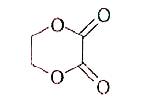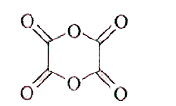Acetic acid on reaction with hydrazoic acid (N3H) in the presence of H2SO4 followed by heating and hydrolysis in basic medium gives acetamide.
Methyl isocyanate (Me−N=C=O) is formed is an intermediate compound.
If both (A) are (R) are true and (R) is the correct explanation of (A).
If both (A) and (R) are true but (R) is not the correct explanation of (A).
If (A) is true but (R) is false.
If (A) is false but (R) is true.
The correct Answer is:D
To solve the problem, we will break down the reaction of acetic acid with hydrazoic acid in the presence of sulfuric acid, followed by heating and hydrolysis in a basic medium, to understand how acetamide is formed and the role of methyl isocyanate as an intermediate.
1. Identify the Reactants:
- Acetic acid (CH₃COOH)
- Hydrazoic acid (N₃H)
- Sulfuric acid (H₂SO₄)
2. Initial Reaction:
- When acetic acid reacts with hydrazoic acid in the presence of sulfuric acid, a dehydration reaction occurs. The hydroxyl group (OH) from acetic acid and a hydrogen atom from hydrazoic acid combine to form water (H₂O), leading to the formation of an intermediate compound.
3. Formation of the Intermediate:
- The reaction can be represented as:
CH3COOH+N3H→CH3C(=O)N3+H2O
- The product formed is an azide derivative of acetic acid.
4. Elimination of Nitrogen:
- The azide group (N₃) is unstable and can decompose, releasing nitrogen gas (N₂) and forming methyl isocyanate (Me-N=C=O) as an intermediate:
CH3C(=O)N3→CH3N=C=O+N2
5. Hydrolysis of Methyl Isocyanate:
- The next step involves hydrolysis of methyl isocyanate in a basic medium. During hydrolysis, the isocyanate group reacts with water:
CH3N=C=O+H2O→CH3NH2+CO2
- This reaction yields acetamide (CH₃NH₂) and carbon dioxide (CO₂).
6. Final Products:
- The final products of the reaction are acetamide and carbon dioxide.
7. Conclusion:
- The assertion that acetic acid reacts with hydrazoic acid to give acetamide is incorrect, as the final product is methyl amine (CH₃NH₂) and carbon dioxide (CO₂). The reason that methyl isocyanate is formed as an intermediate is correct.
Summary of the Assertion and Reason:
- Assertion: Acetic acid on reaction with hydrazoic acid in the presence of sulfuric acid followed by heating and hydrolysis in a basic medium gives acetamide. (Incorrect)
- Reason: Methyl isocyanate is formed as an intermediate compound. (Correct)
Answer:
The correct option is D: Assertion is wrong, reason is correct.
- Acetic acid (CH₃COOH)
- Hydrazoic acid (N₃H)
- Sulfuric acid (H₂SO₄)
- When acetic acid reacts with hydrazoic acid in the presence of sulfuric acid, a dehydration reaction occurs. The hydroxyl group (OH) from acetic acid and a hydrogen atom from hydrazoic acid combine to form water (H₂O), leading to the formation of an intermediate compound.
- The reaction can be represented as:
CH3COOH+N3H→CH3C(=O)N3+H2O
- The product formed is an azide derivative of acetic acid.
- The azide group (N₃) is unstable and can decompose, releasing nitrogen gas (N₂) and forming methyl isocyanate (Me-N=C=O) as an intermediate:
CH3C(=O)N3→CH3N=C=O+N2
- The next step involves hydrolysis of methyl isocyanate in a basic medium. During hydrolysis, the isocyanate group reacts with water:
CH3N=C=O+H2O→CH3NH2+CO2
- This reaction yields acetamide (CH₃NH₂) and carbon dioxide (CO₂).
- The final products of the reaction are acetamide and carbon dioxide.
- The assertion that acetic acid reacts with hydrazoic acid to give acetamide is incorrect, as the final product is methyl amine (CH₃NH₂) and carbon dioxide (CO₂). The reason that methyl isocyanate is formed as an intermediate is correct.
- Assertion: Acetic acid on reaction with hydrazoic acid in the presence of sulfuric acid followed by heating and hydrolysis in a basic medium gives acetamide. (Incorrect)
- Reason: Methyl isocyanate is formed as an intermediate compound. (Correct)
The correct option is D: Assertion is wrong, reason is correct.
Topper's Solved these Questions
- CARBOXYLIC ACIDS AND THEIR DERIVATIVESBOOK - CENGAGE CHEMISTRY ENGLISHCHAPTER - CARBOXYLIC ACIDS AND THEIR DERIVATIVESEXERCISE - Exercises Archives (Single Correct)
10 Videos
- CARBOXYLIC ACIDS AND THEIR DERIVATIVESBOOK - CENGAGE CHEMISTRY ENGLISHCHAPTER - CARBOXYLIC ACIDS AND THEIR DERIVATIVESEXERCISE - Exercises Archives (Assertion-Reasoning)
2 Videos
- CARBOXYLIC ACIDS AND THEIR DERIVATIVESBOOK - CENGAGE CHEMISTRY ENGLISHCHAPTER - CARBOXYLIC ACIDS AND THEIR DERIVATIVESEXERCISE - Exercises (Singlecorrect)
64 Videos
- BIOMOLECULESBOOK - CENGAGE CHEMISTRY ENGLISHCHAPTER - BIOMOLECULESEXERCISE - Exercises Archives (Analytical And Descriptive)
8 Videos
- CHEMICAL KINETICSBOOK - CENGAGE CHEMISTRY ENGLISHCHAPTER - CHEMICAL KINETICSEXERCISE - Archives Subjective
23 Videos
Similar Questions
Knowledge Check
Given is mechanism of Beckmann rearrangement.


On treatment H2SO4 followed by hydrolysis in acidic medium above compound gives.ACH3−CO2H,Ph−NH2BCH3−NH2,Ph−CO2HCPh−CH2−NH2+Ph−CO2HDPh−CO2H+CH3−CO2HWhen ethylene glycol is heated with oxalic acid in the presence of conc. H2SO4, the product formed is :
A B
B C
C D
D
Write the balanced reaction of titration of KMnO4 Vs oxalic acid in presence of H2SO4.
View SolutionK2Cr2O7 on reaction with H2O2 in acidic medium gives
View SolutionMethanoic acid is heated with conc. H2SO4, to form
View SolutionFormic acid when heated with conc.H2SO4 produces …….. .
View SolutionOxalic acid when heated with conc.H2SO4 it gives out
View SolutionHeating mxiture of ethyl alcohol and acetic acid in presence of conc. H2SO4 produces a fruity smelling compound. This reaction is called :
View Solution
